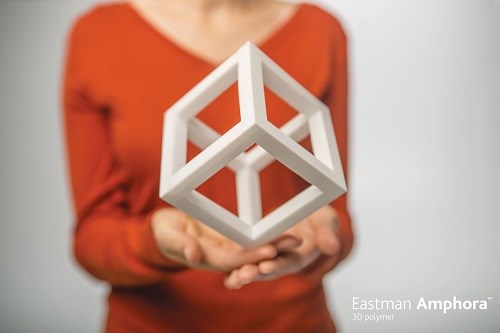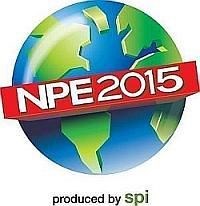Carbon Fiber Filament For New 3D Printing Capabilities
Just last year, Eastman Chemical and Helian Polymers of The Netherlands, a leader in filament 3D manufacturing, teamed up to launch a 3D printing filament under Helian’s ColorFabb brand based on Eastman’s Amphora 3D XT-copolyester.


Just last year, and Helian Polymers of The Netherlands, a leader in filament 3D manufacturing, teamed up to launch a 3D printing filament under Helian’s ColorFabb brand based on Eastman’s Amphora 3D XT-copolyester. The material focuses on functionality and features strength, workability, processing, aesthetics and low odor for 3D printed products.
At NPE 2015, the partners are launching a further advance with new copolyester-based carbon fiber 3D filament-- ColorFabb XT-CF20, also based on Eastman’s Amphora 3D polymer—helping a Kickstarter campaign to revolutionize the industry and showcase new printing capabilities. The new material boasts high melt strength and viscosity, good dimensional accuracy and stability, low printing odor, and stiffness without being brittle. Its heat resistance, dimensional stability and stiffness combined are said to make it ideal for use in the fabrication of drones, aerospace and automotive parts, and prototyping.
Meanwhile, is a fast and affordable commercial-grade 3D printer—the result of a manufacturer making a difference in 3D printing. The project to develop this new 3D printer was launched from a successful Kickstarter campaign and features ColorFabb XT-copolyester made with Eastman’s Amphora 3D polymer. The new low-odor, styrene-free polymer is uniquely suited for the 3D market and printers, meets regulatory compliance requirements, and it offers air quality and dimensional stability benefits. These benefits are said to be ideally suited for Stacker printers, which are now optimized to run ColorFabb XT-copolyester.
Says Alex Dudal, market development representative at Eastman, “The 3D printing industry is progressing fast, and we’re constantly seeking new, exciting things happening—from the development of medical replicas and implants to 3-D printed cars. With Eastman’s Amphora 3D polymer, companies like Stacker are able to push the boundaries and created machines that can print more than one part at a time while still being affordable.”
Want to find or compare materials data for different resins, grades, or suppliers? Check out Plastic Technology’s Plaspec Global materials database.
Related Content
-
High-Jetness Carbon Black for Engineered Plastics
Orion’s new Printex chroma 500 Beads are well suited for applications such as injection molded automotive parts and household appliances.
-
How to Optimize Injection Molding of PHA and PHA/PLA Blends
Here are processing guidelines aimed at both getting the PHA resin into the process without degrading it, and reducing residence time at melt temperatures.
-
POGS Chooses Novodur ECO ABS for Childrens Headphones
Manufacturer of audio equipment for children will use INEOS Styrolution ABS with 50% recycled content.







